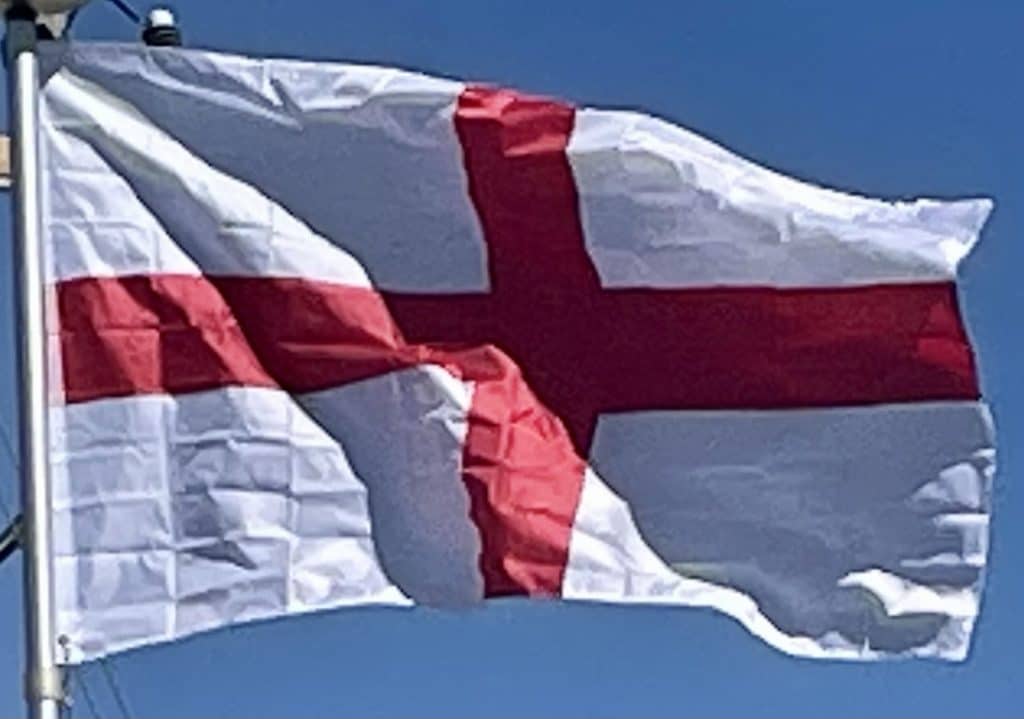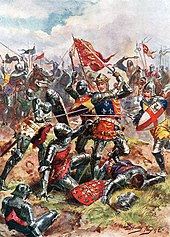
England
Roman military withdrawals left Britain open to invasion by pagan, seafaring warriors from north-western continental Europe, chiefly the Saxons, Angles, Jutes and Frisians who had long raided the coasts of the Roman province. These groups then began to settle in increasing numbers over the course of the fifth and sixth centuries, initially in the eastern part of the country. Their advance was contained for some decades after the Britons’ victory at the Battle of Mount Badon, but subsequently resumed, overrunning the fertile lowlands of Britain and reducing the area under Brittonic control to a series of separate enclaves in the more rugged country to the west by the end of the 6th century. Contemporary texts describing this period are extremely scarce, giving rise to its description as a Dark Age. The nature and progression of the Anglo-Saxon settlement of Britain is consequently subject to considerable disagreement; the emerging consensus is that it occurred on a large scale in the south and east but was less substantial to the north and west, where Celtic languages continued to be spoken even in areas under Anglo-Saxon control. Roman-dominated Christianity had, in general, disappeared from the conquered territories, but was reintroduced by missionaries from Rome led by Augustine from 597 onwards. Disputes between the Roman- and Celtic-dominated forms of Christianity ended in victory for the Roman tradition at the Council of Whitby (664), which was ostensibly about tonsures (clerical haircuts) and the date of Easter, but more significantly, about the differences in Roman and Celtic forms of authority, theology, and practice.
During the settlement period the lands ruled by the incomers seem to have been fragmented into numerous tribal territories, but by the 7th century, when substantial evidence of the situation again becomes available, these had coalesced into roughly a dozen kingdoms including Northumbria, Mercia, Wessex, East Anglia, Essex, Kent and Sussex. Over the following centuries, this process of political consolidation continued. The 7th century saw a struggle for hegemony between Northumbria and Mercia, which in the 8th century gave way to Mercian preeminence. In the early 9th century Mercia was displaced as the foremost kingdom by Wessex. Later in that century escalating attacks by the Danes culminated in the conquest of the north and east of England, overthrowing the kingdoms of Northumbria, Mercia and East Anglia. Wessex under Alfred the Great was left as the only surviving English kingdom, and under his successors, it steadily expanded at the expense of the kingdoms of the Danelaw. This brought about the political unification of England, first accomplished under Æthelstan in 927 and definitively established after further conflicts by Eadred in 953. A fresh wave of Scandinavian attacks from the late 10th century ended with the conquest of this united kingdom by Sweyn Forkbeard in 1013 and again by his son Cnut in 1016, turning it into the center of a short-lived North Sea Empire that also included Denmark and Norway. However, the native royal dynasty was restored with the accession of Edward the Confessor in 1042.
A dispute over the succession to Edward led to the Norman Conquest in 1066, accomplished by an army led by Duke William of Normandy. The Normans themselves originated from Scandinavia and had settled in Normandy in the late 9th and early 10th centuries. This conquest led to the almost total dispossession of the English elite and its replacement by a new French-speaking aristocracy, whose speech had a profound and permanent effect on the English language.
